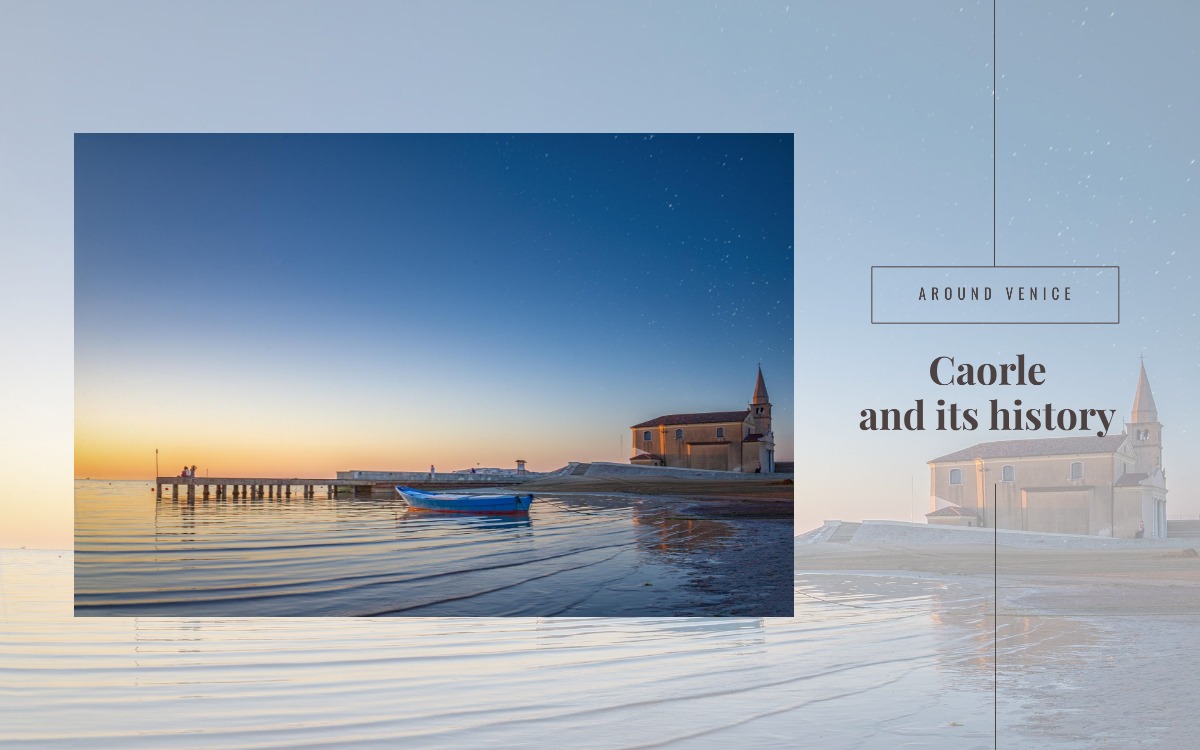Located about 70 km north-east of Venice, Caorle is an ancient fishing village where time seems to have stopped and is recalled in the form of ladies who repair fishermen’s nets by hand, protecting themselves from the sun thanks to the curtains on the doors of their houses.
Along with the nearby Brussa, San Giorgio di Livenza and neighbouring towns (Ottava Presa, Marango, San Gaetano, Cà Corniani, Cà Cottoni, Castello di Brussa, Porto Santa Margherita and Duna Verde), Caorle offers about 18 km of beaches for a holiday dedicated to relaxation, beaches, sun and sea.
The entire length of the beach is lined with a fantastic promenade where sports enthusiasts can jog, skate and cycle.
With a large number of hotels, tourist villages, holiday homes and campsites, the town is able to accommodate many Italian and foreign tourists. Furthermore, Caorle is particularly convenient to get to because it is served by a very efficient transport network.
The History of Caorle
Caorle is not “just” sea and beaches, it also represents a real journey through history.
Although the first sources date back to 238 BC, the history of Caorle, began in the late Bronze Age (XVII-VI century BC), as demonstrated by the discovery of a prehistoric village and related finds in the immediate hinterland (hamlet of San Gaetano).
According to the quotations of Pliny the Elder, in Roman times Caorle possessed the most important port in the Upper Adriatic.
Furthermore, following the barbarian invasions of the Goths, Tartars and Huns and the fall of the Roman Empire, Caorle assumed ever greater importance, becoming the seat of significant maritime and river trade and contributing significantly to the foundation of Venice.
Caorle’s golden period ended due to various incursions, including those from Friuli and Genoa, from the twelfth to the fifteenth century; the subsequent partial recovery suffered a severe blow in the eighteenth century due to the French and Austrian dominations. From the mid-nineteenth to the mid-twentieth century, Caorle was repopulated thanks to the increase in the importance of agriculture and, following the two World Wars, it experienced another renaissance linked to the popularity of seaside tourism thanks to the beauty of the region and the cordial and hospitable character of the local “caorlotti”. Ernest Hemingway was also fascinated by the historic fishing village, which inspired the writing of his novel “Across the River and Into the Trees“.
A walk through history
Walking through Caorle you realise you can take in history in every nook of the town: the historic centre, the Cathedral with the bell tower and the Sanctuary of the Madonna dell’Angelo are the most striking examples.
The historic centre, the heart of city life, is characterised by multiple piazzas and narrow streets paved with the typical porphyry cubes. The central street Rio Terrà (literally “underground canal”) and Calle Lunga allow visitors and locals to stroll among the shop windows, enjoying an ice cream or toasting with an excellent aperitif.
The houses in the centre, which are very similar to those in Venice, are historically painted in bright colours so that they can be spotted by fishermen returning home.
The Cathedral of Caorle, which is dedicated to Santo Stefano Protomartire and dates back to the eleventh century, is the symbol of the city. It is built in the style of a Romanesque basilica formed by three naves and three apses and it stands on the ruins of a pre-existing paleochristian basilica. Inside, a large wooden crucifix from the fifteenth century hangs near the triumphal arch. The Cathedral houses wonderful works such as the Pala d’oro, an unusual Pietà in gilded wood and The Last Supper attributed to Gregorio Lazzarini.
In addition, the attached parish museum is home to panels depicting the apostles and a Chapter Cross from the fourteenth century, sacred furnishings and relics including the reliquary of the skull of St. Stephen the Protomartyr and the reliquary of the precious blood, which according to tradition contains some earth on which Jesus walked while bleeding.
The bell tower of the Cathedral is known all over the world and is cylindrical in shape with a conical spire.
The Sanctuary of the Madonna dell’Angelo, which was rebuilt on a pre-existing church, is situated on an evocative promontory and is a destination for devoted pilgrims.
Legend has it that some fishermen who went out to sea saw a light on the horizon emanating from a wooden statue of the Madonna and Child which, despite its marble base, was floating in the water. The fishermen carried the statue ashore with the intention of placing it inside the Cathedral: they were unable to move it, however. The Bishop assigned the task to some children who, with their purity and innocence, managed to bring the statue of the Madonna to the Cathedral. The next day the statue disappeared and they found it in a small church by the sea. Since then the statue of the Madonna and Child remained in that church, which was renamed the Sanctuary of the Madonna dell’Angelo.
Every five years the Madonna is celebrated by decorating the city and the surrounding hamlets with flags, ribbons, bows and decorations and carrying the statue in a procession by sea.
In addition to the marvellous statue of the Virgin and Child, inside the Sanctuary it is also possible to admire a relief of the Archangel St. Michael by the sculptor Andrea dell’Aquila and a Baroque high altar.
In the immediate vicinity there is a Romanesque bell tower, the lighthouse of Caorle.




